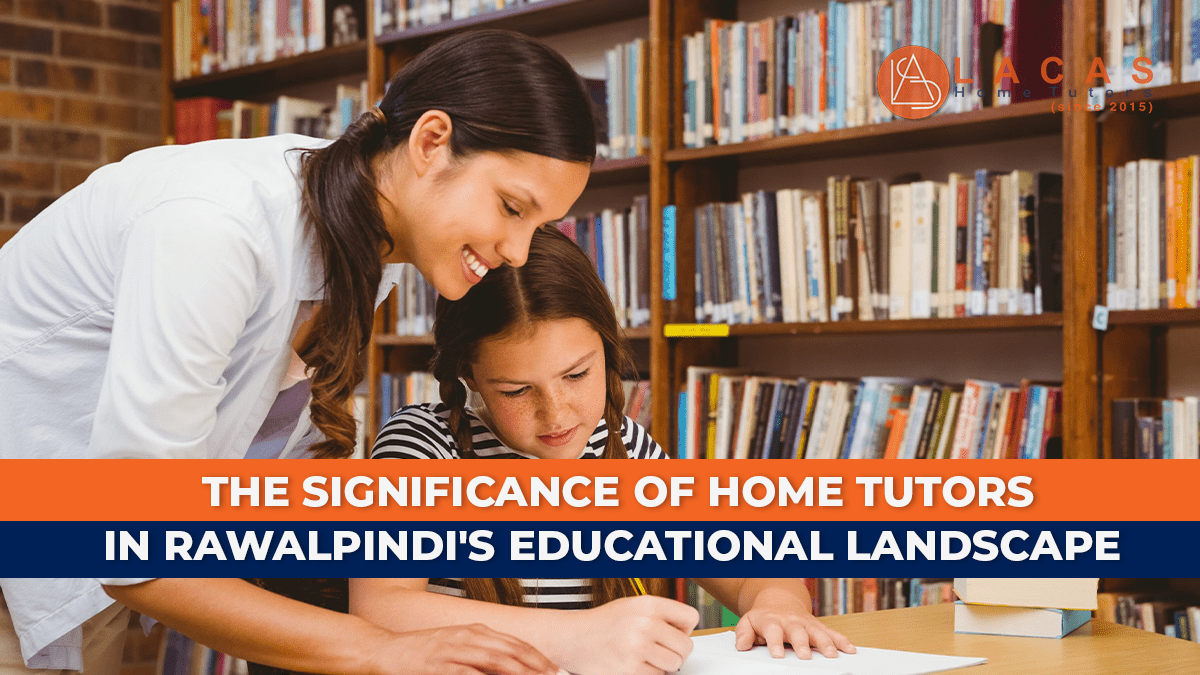Tutoring a child can be a rewarding experience, not only for the child but also for the tutor. As a tutor, you have the opportunity to help a child reach their full potential and succeed academically. However, tutoring a child effectively requires more than just knowing a particular subject. It involves understanding the child’s learning style, creating a positive and engaging learning environment, and using effective teaching techniques.
Effective Tutoring Strategies for Children: An Introduction
Tutoring a child can be an incredibly fulfilling experience. Not only do you have the opportunity to make a positive impact on a child’s academic journey, but you also have the chance to witness their growth and success firsthand. However, effective tutoring goes beyond simply sharing knowledge; it requires careful planning, strategy, and a deep understanding of the child’s individual needs.
In this section, we will delve into effective tutoring strategies for children, exploring the various elements that contribute to a successful tutoring experience. From building a strong tutor-child relationship to tailoring instruction to the child’s unique learning style, each strategy plays a crucial role in helping the child reach their full potential.
By implementing these strategies, you can create a positive and engaging learning environment that fosters both academic and personal growth. Additionally, we will discuss the importance of setting clear learning goals, providing constructive feedback, boosting confidence and motivation, and adapting teaching methods to cater to different learning styles.
Whether you’re a parent, teacher, or volunteer, this section will provide valuable insights and practical tips for tutoring a child effectively. So let’s dive in and discover the power of effective tutoring strategies for children!
Building a Strong Tutor-Child Relationship for Success
Building a strong tutor-child relationship is the foundation for a successful tutoring experience. When a child feels comfortable and supported, they are more likely to engage in the learning process and be open to receiving help and guidance.
To build this relationship, it is important to create a safe and nurturing environment where the child feels respected and valued. Take the time to get to know the child, their interests, strengths, and areas of improvement. Show genuine interest in their life outside of tutoring, such as their hobbies, favorite books, or sports. This will help you connect with the child on a personal level and establish trust.
Relationships require communication, and this is also true between a tutor and their pupil. Listen attentively to the child’s thoughts, concerns, and questions, and encourage open and honest communication. Provide a supportive and non-judgmental space where the child feels comfortable asking for help or clarifying concepts they may not fully understand.
Additionally, it is important to set clear expectations and boundaries from the start. Discuss with the child and their parents the goals of the tutoring sessions and the roles and responsibilities of each party involved. This will ensure that everyone is on the same page and working towards a common goal.
Building a strong tutor-child relationship takes time and effort, but the benefits are invaluable. By fostering a positive and supportive connection, you can create an environment where the child feels empowered to learn and grow academically and personally.

Personalized Learning: Tailoring Instruction to the Child’s Needs
Every child has unique strengths, weaknesses, and learning styles. As a tutor, it is crucial to recognize and adapt to these individual needs to ensure effective learning. This is where the concept of individualized learning is useful. Personalized learning involves tailoring instruction and educational materials to suit the child’s specific needs, abilities, and interests.
To provide personalized learning, start by assessing the child’s current level of knowledge and understanding of the subject you are tutoring. This can be done through informal discussions, quizzes, or diagnostic assessments. By identifying the child’s areas of strength and areas that need improvement, you can create a targeted and individualized learning plan.
Next, customize your teaching methods and materials to match the child’s learning style. Some children may be visual learners and benefit from using diagrams, charts, or flashcards, while others may be auditory learners and prefer explanations and discussions. Adapt your teaching strategies accordingly to ensure the child engages and retains the information effectively.
Additionally, consider the child’s interests and hobbies when planning your lessons. Incorporating topics or examples that the child finds engaging and relatable can help foster a greater interest in learning and make the tutoring sessions more enjoyable.
Recall that individualized education is not a one-size-fits-all strategy. It requires flexibility and adaptability on your part as a tutor. Continuously monitor the child’s progress and make adjustments as needed to ensure their individual needs are met. By tailoring instruction to the child’s needs, you can create a personalized learning experience that maximizes their potential and leads to academic success.
Setting Clear Learning Goals for Effective Tutoring
Setting clear learning goals is essential for effective tutoring. Without clear goals, tutoring sessions can lack focus and direction, making it difficult to measure progress and track the child’s improvement. By setting clear learning goals, you can establish a roadmap for the child’s academic journey and ensure that both you and the child are working towards a common objective.
To set clear learning goals, start by assessing the child’s current abilities and areas that need improvement. This can be done through diagnostic assessments or informal discussions. Identify specific skills or concepts that the child needs to master and break them down into smaller, achievable objectives. This allows you to create a step-by-step plan that gradually builds upon the child’s knowledge and skills.
Communicate these learning goals to the child and involve them in the goal-setting process. This helps the child take ownership of their learning and motivates them to actively participate in the tutoring sessions. Ensure that the goals are realistic and attainable, taking into account the child’s abilities and the time available for tutoring.
Regularly evaluate the child’s progress toward the learning goals and provide feedback on their performance. Celebrate their successes and make any necessary goal adjustments. Setting clear learning goals not only helps the child stay on track but also provides a sense of direction and purpose to the tutoring sessions, ultimately leading to greater success and growth.
Engaging and Interactive Lessons for Enhanced Learning
Engaging and interactive lessons are key to enhancing a child’s learning experience during tutoring sessions. When lessons are exciting, hands-on, and involve active participation from the child, they become more memorable and effective in fostering understanding and retention of information.
One way to make lessons engaging is to incorporate interactive activities and games. For example, if you’re teaching math, you can use manipulatives like counting cubes or fraction tiles to make abstract concepts more tangible and relatable. Additionally, online educational platforms offer interactive games and quizzes that can make learning enjoyable and interactive for the child.
Another effective strategy is to encourage the child to ask questions and actively participate in discussions. This not only helps them to clarify any doubts or misconceptions they may have but also promotes critical thinking and analytical skills. As a tutor, you can initiate discussions by asking open-ended questions or presenting real-life scenarios related to the topic of study.
Incorporating technology can also add an element of engagement to lessons. Utilize educational apps, videos, or online resources that align with the child’s interests and learning style. This can make the learning experience more interactive and dynamic, appealing to their natural curiosity and love for technology.
Lastly, don’t underestimate the power of creativity and visual aids. Use colorful diagrams, charts, and visuals to explain complex concepts or illustrate key ideas. Incorporate real-world examples and relate the lesson to the child’s daily life to make it more relevant and relatable.
Incorporating engaging and interactive elements into lessons not only captures the child’s attention but also ensures active participation and deeper understanding. By making learning enjoyable and interactive, you can create a positive and memorable tutoring experience that will contribute to the child’s academic success and personal growth.
Also Read: The Most important things a Tutor can do for a student
Fostering Effective Communication with the Child
Effective communication is key to a successful tutor-child relationship and plays a crucial role in the child’s overall learning experience. When you foster effective communication with the child, you create an open and supportive environment where they feel comfortable expressing their thoughts, asking questions, and seeking clarification.
To foster effective communication, it is important to be an active and attentive listener. Show genuine interest in what the child has to say, and provide them with your undivided attention during tutoring sessions. Encourage them to share their thoughts, ideas, and concerns, and validate their feelings and opinions.
Additionally, use clear and concise language when explaining concepts or answering their questions. Break down complex information into smaller, more manageable parts to ensure understanding. Ask open-ended questions to encourage the child to think critically and articulate their ideas.
It is also important to create a safe space for the child to make mistakes and learn from them. Encourage them to take risks and embrace challenges, while providing constructive feedback and guidance when needed. Celebrate their achievements and offer encouragement and support when they face difficulties.
By fostering effective communication with the child, you establish a strong foundation for learning and create a positive and nurturing environment where the child feels valued, heard, and empowered to reach their full potential.
Providing Constructive Feedback to Support Growth
Providing constructive feedback is a crucial aspect of effective tutoring, as it plays a significant role in supporting a child’s growth and development. Feedback serves as a tool to guide and motivate the child, helping them understand their strengths and areas for improvement.
When providing feedback, it is important to focus on the child’s effort and progress rather than solely on their final result. Highlight the specific areas where they have shown improvement, and acknowledge their hard work and dedication. This helps to build their confidence and reinforces their belief in their own abilities.
However, constructive feedback also entails pointing out areas that require further development. Provide guidance on how to improve rather than just calling out errors. Offer specific suggestions, strategies, or resources that can help them overcome challenges and enhance their skills.
It is equally important to deliver feedback positively and encouragingly. Choose your words carefully and frame your feedback in a way that inspires the child to continue learning and striving for growth. Avoid using negative or judgmental language, as this can demotivate the child and hinder their progress.
Remember, the purpose of providing constructive feedback is to support the child’s growth and development. By offering feedback that is specific, encouraging, and supportive, you can empower the child to reach their full potential and foster a love for continuous learning.
Boosting Confidence and Motivation in the Child’s Learning
Boosting a child’s confidence and motivation is essential for their overall learning and academic success. When a child feels confident in their abilities and motivated to learn, they are more likely to actively engage in the tutoring process and achieve their goals.
One effective way to boost a child’s confidence is by providing praise and positive reinforcement. Recognize and celebrate their achievements, no matter how small, and highlight their strengths. This helps the child develop a sense of accomplishment and builds their self-esteem. Additionally, encourage them to set realistic goals and acknowledge their progress towards these goals.
Motivation can be enhanced by making learning enjoyable and meaningful. Incorporate the child’s interests and hobbies into the lessons, and provide opportunities for them to explore topics that they are passionate about. Incorporating interactive activities, games, and real-world examples can also make the learning experience more engaging and motivating.
Furthermore, it is important to emphasize the importance of perseverance and a growth mindset. Encourage the child to view challenges as opportunities for growth and to see mistakes as valuable learning experiences. By fostering a positive and supportive environment, the child will feel empowered to take risks, overcome obstacles, and continue their learning journey with confidence and motivation.
Also Read,
How Does Online Tutoring Benefit a Student?
Adapting Teaching Methods to Cater to Different Learning Styles
In the realm of tutoring, one size does not fit all. Each child has their own unique learning style, and tutors need to adapt their teaching methods accordingly. Adapting teaching methods to cater to different learning styles ensures that every child can understand and engage with the material effectively.
Visual learners benefit from seeing information in a visual format, such as charts, diagrams, or images. Tutors can use visual aids to enhance understanding and retention. For auditory learners, verbal explanations, discussions, and listening to lectures or recordings can be more effective. Tutors can provide detailed explanations and engage in conversations to cater to their needs.
For kinesthetic learners, hands-on activities and interactive lessons are key. Tutors can incorporate movement, manipulatives, and role-playing to engage kinesthetic learners. They can also provide opportunities for these learners to physically interact with the subject matter.
In addition to these main learning styles, there may be children who prefer a combination of these styles or have a preference for one style in certain subjects and another in different subjects. Tutors need to be observant and flexible, adapting their teaching methods to meet the needs of each child.
By adapting teaching methods to cater to different learning styles, tutors can ensure that each child is able to grasp and retain information in a way that works best for them. This leads to a more effective and rewarding tutoring experience for both the tutor and the child.
Collaborating with Parents: A Partnership for Tutoring Success
Collaborating with parents is an essential aspect of effective tutoring. When parents and tutors work together, they form a powerful partnership that can significantly impact a child’s learning and academic success. By maintaining open lines of communication and sharing valuable insights, parents can provide tutors with valuable information about their child’s strengths, weaknesses, and individual needs.
When collaborating with parents, it is important to involve them in the goal-setting process. Discuss the learning goals and objectives with parents, and ensure that everyone is working towards a common objective. By aligning the efforts of both parents and tutors, the child receives consistent support and guidance.
Regular updates and progress reports are another key aspect of collaboration. Share the child’s progress with parents, highlighting their achievements and areas that need improvement. This helps parents stay informed about their child’s academic journey and allows them to provide additional support and reinforcement at home.
Collaborating with parents also means seeking their input and feedback. Parents know their children best, and their insights can be invaluable in tailoring instruction and teaching strategies to meet the child’s needs. Regularly check in with parents to discuss the child’s progress, address any concerns, and brainstorm solutions.
By collaborating with parents, tutors can create a strong support system that enhances the child’s learning experience. Together, parents and tutors can provide the necessary guidance, encouragement, and resources to help the child reach their full potential academically and personally.











